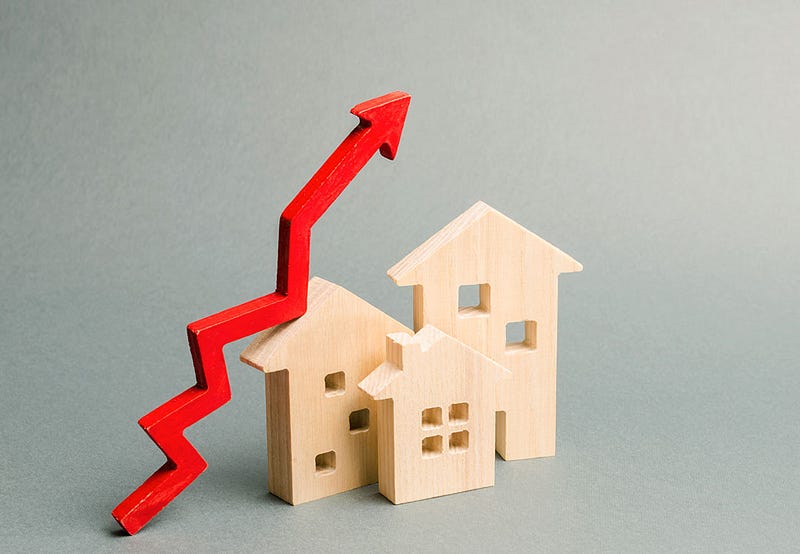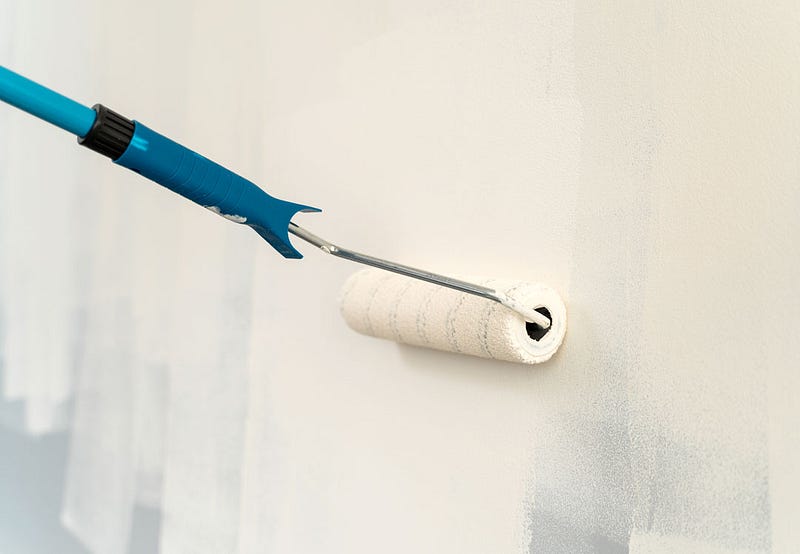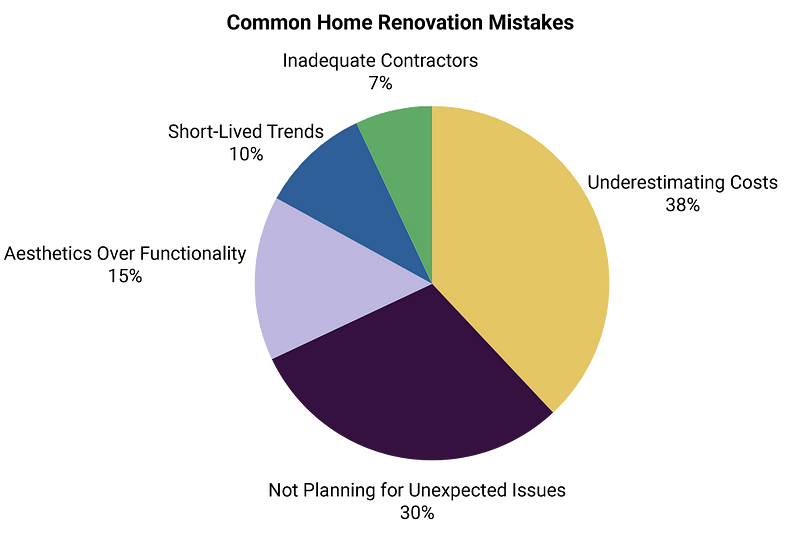Blog
Keep updated with recent real estate news.
What Home Improvement Adds the Most Value?

Home improvements are a major consideration for homeowners, whether they’re preparing to sell or simply looking to enhance their living space. But not all renovations are created equal?—?some can significantly increase your home’s value, while others might barely break even. In a competitive housing market like Los Angeles, understanding which upgrades offer the highest return on investment (ROI) is essential.
From minor kitchen remodels to energy-efficient upgrades, certain projects can not only make your home more appealing but also yield a strong financial return when it’s time to sell. On the other hand, over-personalized or unnecessary renovations can be a costly mistake, adding little to your property’s resale value.
This guide will help you navigate the world of home improvements by breaking down which upgrades add the most value, their average costs in Los Angeles, and what makes them worthwhile. Whether you’re staying put or planning to list your property, knowing where to invest your time and money can make all the difference.

Understanding Value: What Buyers Look For
When considering home improvements, it’s essential to understand how different upgrades can influence your property’s value, especially in a dynamic market like Los Angeles. Buyers’ preferences and market trends play significant roles in determining which renovations offer the best return on investment (ROI).
Defining “Value” in the Context of Home Improvements
In real estate, “value” refers to the enhancement a particular improvement brings to a property’s marketability and sale price. Home improvements that align with current buyer demands and add functional or aesthetic appeal tend to offer higher ROI. For instance, energy-efficient upgrades not only reduce utility costs but also attract environmentally conscious buyers, thereby increasing perceived value.
How Market Trends and Buyer Preferences Influence ROI
Market trends significantly impact which home improvements are deemed valuable. In 2025, several trends have emerged in Los Angeles:
- Sustainability and Energy Efficiency: There’s a growing preference for eco-friendly homes. Upgrades like solar panels, energy-efficient windows, and sustainable materials are in demand. These not only lower energy bills but also appeal to a broad buyer base. (Forbes)
- Smart Home Technology: Integrating smart home features, such as automated lighting, security systems, and climate control, has become increasingly popular. These technologies offer convenience and can make a home more attractive to tech-savvy buyers. (Decorilla)
- Functional Spaces: The trend towards multifunctional spaces continues, with buyers looking for homes that offer flexibility, such as home offices or adaptable living areas. This shift reflects changes in work habits and lifestyle preferences. (Harb & Co. Real Estate)
Factors Affecting ROI: Location, Property Type, and Quality of Work
Several factors influence the ROI of home improvements:
- Location: In Los Angeles, neighborhood characteristics and local market conditions significantly affect ROI. For example, adding a deck may yield a higher return in areas where outdoor living is prevalent. Understanding local buyer expectations is crucial.
- Property Type: The type of property dictates suitable improvements. Single-family homes might benefit more from additions like extra bedrooms or enhanced curb appeal, while condos could see higher ROI from interior upgrades like modernized kitchens.
- Quality of Work: The execution quality of any improvement directly impacts its value. Professional workmanship and the use of high-quality materials ensure durability and appeal, leading to better ROI. Conversely, subpar work can detract from a home’s value.

Top Home Improvements with the Highest ROI
Home improvements can significantly enhance both the functionality and resale value of a property. The following upgrades are some of the best investments for homeowners in Los Angeles, providing high returns when executed strategically.
Kitchen Remodels
Description: Upgrading appliances, countertops, cabinetry, and fixtures to create a modern and functional kitchen.
Average Cost in Los Angeles:
- Minor Remodel: Approximately $28,000 for a 200-square-foot kitchen. (Sweeten)
- Mid-Range Remodel: Around $45,000. (Sweeten)
- High-End Remodel: Starts at $85,000 or more, especially for custom cabinetry and luxury appliances. (Sweeten)
ROI: The Remodeling Magazine Cost vs. Value Report estimates that minor kitchen remodels recoup 70–80% of their cost, while high-end renovations have a lower ROI, often between 55–65%.
Why It’s Valuable: The kitchen is often the heart of the home, and a well-designed, modern kitchen is a top priority for buyers.
Bathroom Renovations
Description: Modernizing fixtures, tiling, vanities, and lighting to improve both functionality and aesthetics.
Average Cost in Los Angeles:
- Budget Bathroom: Starts at $18,000 for a 35-square-foot space. (Sweeten)
- Mid-Grade Bathroom: Averages around $28,500. (Sweeten)
- High-End Bathroom: Starts at approximately $40,500, especially when expanding the space. (Sweeten)
ROI: Bathroom remodels provide an ROI of 60–70% for mid-range upgrades and 50–60% for high-end renovations. (Remodeling Magazine)
Why It’s Valuable: Buyers prioritize updated bathrooms as a sign of a well-maintained home, making them one of the most impactful areas to renovate.
Energy-Efficient Upgrades
Description: Installing energy-efficient windows, solar panels, and enhanced insulation to lower energy costs and appeal to eco-conscious buyers.
Average Cost in Los Angeles:
- Energy-Efficient Windows: Around $800 to $1,200 per window, including installation.
- Solar Panel Installation: Ranges from $15,000 to $25,000, depending on system size. (Energy Sage)
- Insulation Upgrades: Between $2,000 and $5,000, based on the home’s size and insulation type. (HomeAdvisor)
ROI: Energy-efficient upgrades can recoup 60–80% of their costs while significantly reducing utility bills over time.
Why It’s Valuable: In Los Angeles, where energy costs are high, these upgrades are highly desirable and contribute to long-term savings for homeowners.
Curb Appeal Enhancements
Description: Improving landscaping, exterior painting, and entryway upgrades to create a strong first impression.
Average Cost in Los Angeles:
- Landscaping: Basic projects start at $3,000, while more extensive designs can exceed $10,000.
- Exterior Painting: Costs range from $5,000 to $10,000, depending on the home’s size and condition.
- Entryway Upgrades: Installing a new front door costs between $1,500 and $3,000.
ROI: Enhancing curb appeal often yields an ROI of 80–100%, making it one of the most cost-effective upgrades. (Zillow)
Why It’s Valuable: A home’s exterior is the first thing potential buyers see, and small improvements can greatly influence their perception of the property.
Additional Living Space
Description: Adding square footage through room additions, finishing basements, or constructing Accessory Dwelling Units (ADUs).
Average Cost in Los Angeles:
- Room Addition: Approximately $550 per square foot for a mid-grade master suite addition. (Sweeten)
- ADU Construction: Starts at $150,000 for ground-up construction. (The Sterling-Watson Collective)
ROI: Adding living space can recoup 50–75% of the investment, depending on the size and quality of the addition. ADUs may offer even higher ROI when used as rental units, providing ongoing income.
Why It’s Valuable: Additional living space appeals to buyers looking for flexibility, whether for growing families, home offices, or rental opportunities.

Budget-Friendly Improvements with Significant Impact
Enhancing your home doesn’t always require a substantial investment. Several cost-effective upgrades can significantly improve your home’s appeal and value, especially in a competitive market like Los Angeles. Below are some budget-friendly improvements, along with their average costs and potential benefits.
1. Fresh Interior Paint
Applying a new coat of paint is one of the most straightforward ways to refresh your home’s interior. Neutral colors like white, cream, and light beige are recommended, as they appeal to a broader audience and can even increase your home’s value. (New York Post)
Average Cost in Los Angeles:
- Professional interior painting costs range from $4.60 to $8.68 per square foot. (Homewyse)
- For a 2,500-square-foot home, this translates to approximately $11,500 to $21,700, depending on the complexity and quality of materials used.
Impact:
- Fresh paint can make spaces feel larger, cleaner, and more inviting, positively influencing buyers’ perceptions.
- Neutral tones provide a blank canvas, allowing potential buyers to envision their own decor, which can expedite the selling process.
2. Upgrading Lighting Fixtures
Modern lighting fixtures can dramatically change a room’s ambiance and functionality. Upgrading outdated fixtures not only improves aesthetics but also enhances energy efficiency, especially when paired with LED bulbs.
Average Cost in Los Angeles:
- The cost to install new lighting fixtures varies based on the type and complexity of the fixture.
- Simple installations may cost around $100 per fixture, while more complex setups can go up to $500 or more.
Impact:
- Improved lighting can make spaces appear larger and more welcoming.
- Energy-efficient fixtures can reduce utility bills, appealing to cost-conscious buyers.
3. Installing Smart Home Features
Integrating smart home technology adds modern convenience and can make your property more attractive to tech-savvy buyers. Features like smart thermostats, security systems, and lighting controls are popular additions.
Average Cost in Los Angeles:
- The cost of installing smart home systems varies widely based on the complexity and brand.
- Basic DIY installations can start at $100 to $300, while professional installations, such as comprehensive systems, can range from $1,138 to $3,095. (Networx)
Impact:
- Smart home features offer increased security, energy efficiency, and convenience, which are attractive selling points.
- Homes equipped with smart technology may have a competitive edge in the market, potentially leading to higher offers.
Common Mistakes to Avoid
While home improvements can enhance value and appeal, making the wrong choices can undermine your investment. To maximize ROI and attract buyers, it’s crucial to avoid these common pitfalls. Each misstep can lead to diminished returns or make your home less marketable. According to recent surveys, 38% of homeowners underestimate project scope and costs, while 30% fail to plan for unexpected issues. Additionally, 15% focus solely on aesthetics over functionality, leading to diminished ROI. The pie chart below illustrates the prevalence of these common mistakes among homeowners, emphasizing why careful planning is essential.

1. Over-Improving Beyond Neighborhood Standards
What It Means: Spending excessively on upgrades that surpass the typical quality or value of homes in your neighborhood.
Why It’s a Problem:
- Buyers are often unwilling to pay a premium for a property that exceeds the neighborhood’s baseline value.
- Appraisers will base their valuation on comparable properties in the area, potentially capping your home’s resale price regardless of the improvements.
Example:
- Installing luxury features like a $100,000 kitchen in a neighborhood where homes typically sell for $400,000 may not yield the desired return.
How to Avoid It:
- Research local market trends and comparable properties to understand the expected standard for your area.
- Consult with a real estate agent to ensure your upgrades align with neighborhood expectations.
Proof: A Remodeling Magazine report shows that high-end projects typically have lower ROI in mid-tier neighborhoods, with some projects recouping less than 50% of their cost. (Remodeling Magazine Cost vs. Value Report)
2. Neglecting Necessary Repairs in Favor of Aesthetic Upgrades
What It Means: Prioritizing visual improvements over critical structural or maintenance issues, such as plumbing, roofing, or electrical systems.
Why It’s a Problem:
- Buyers and inspectors will notice neglected repairs during evaluations, which can lead to lower offers or even failed sales.
- A home with cosmetic appeal but underlying issues signals poor maintenance, discouraging serious buyers.
Example:
- Painting over water-damaged walls without addressing the leak may result in more significant issues down the line.
How to Avoid It:
- Address foundational repairs first, such as roof leaks, outdated wiring, or plumbing issues.
- Ensure your home is structurally sound before investing in aesthetic upgrades.
Proof: Zillow data indicates that buyers prioritize move-in-ready homes, with 75% of surveyed buyers preferring properties without major repair needs. (Zillow Consumer Housing Trends)
3. Choosing Overly Personalized Designs
What It Means: Selecting unique or niche designs that reflect personal taste but may not appeal to a broad audience.
Why It’s a Problem:
- Buyers often want a neutral, adaptable space they can personalize themselves.
- Bold or unconventional design choices can alienate potential buyers or increase perceived renovation costs.
Example:
- Installing bright red kitchen cabinets or custom-themed bedrooms may deter buyers who prefer neutral aesthetics.
How to Avoid It:
- Stick to timeless, neutral colors and finishes that appeal to a wide range of buyers.
- Opt for classic designs that complement the home’s style and architecture.
Proof: A National Association of Realtors (NAR) study found that neutral tones and classic designs help homes sell faster and for higher prices, with neutral paint colors increasing a home’s value by an average of $5,000. (NAR Remodeling Impact Report)
How to Decide Which Improvements Are Right for You
Choosing the right home improvements depends on your goals, your neighborhood, and the condition of your home. A strategic approach ensures you maximize both enjoyment and ROI, whether you’re planning to sell or stay long-term. Here’s how to make informed decisions:
1. Assessing Personal Goals: Selling vs. Long-Term Living
If You’re Selling:
- Focus on high-ROI improvements that increase marketability and appeal to a broad audience.
- Prioritize cost-effective upgrades such as minor kitchen and bathroom remodels, fresh paint, and curb appeal enhancements.
If You’re Staying Long-Term:
- Invest in improvements that enhance your quality of life, even if they don’t yield the highest ROI.
- Consider projects like adding energy-efficient features, creating functional spaces, or upgrading systems like HVAC for comfort and convenience.
Proof: A study by Remodeling Magazine found that homeowners who remodel to sell prioritize ROI-focused projects like minor kitchen updates (average ROI: 75%) over extensive renovations with lower returns. (Remodeling Magazine Cost vs. Value Report)
2. Evaluating Neighborhood Trends and Comparable Properties
Why It’s Important:
Your neighborhood’s real estate market largely dictates which upgrades make sense. Over-investing in high-end features in a mid-tier area may not yield returns, while under-investing in a luxury neighborhood could hurt marketability.
How to Evaluate Trends:
- Analyze comparable properties (comps) in your area to identify common features and upgrades.
- Research recent home sales to understand which improvements buyers are willing to pay for.
Example:
- In a mid-range neighborhood in Los Angeles, buyers might expect stainless steel appliances and quartz countertops. In luxury areas like Beverly Hills, features like custom cabinetry and spa-like bathrooms might be the standard.
Proof: Zillow research shows that homes priced appropriately for their neighborhoods sell 58% faster than those with over-the-top improvements. (Zillow Research)
3. Consulting with Real Estate Professionals and Contractors for Tailored Advice
Real Estate Agents:
- Agents can provide insights into what buyers in your area are looking for and recommend upgrades that align with market demands.
- They can also help determine which improvements are worth the investment based on your home’s price point and neighborhood.
Contractors:
- Licensed contractors can assess the feasibility and cost of your desired upgrades.
- Consulting professionals ensures that projects are completed to code and meet high-quality standards, which is critical for ROI.
Example:
- A real estate agent might suggest focusing on curb appeal in a competitive market, while a contractor can help estimate costs for landscaping or exterior painting.
Proof: According to the National Association of Realtors (NAR), 99% of agents recommend improvements that increase a home’s curb appeal, and 94% believe these upgrades help sell homes faster. (NAR Remodeling Impact Report)
Final Thoughts
Choosing the right home improvements can transform your living space while significantly boosting its value. High-ROI upgrades like minor kitchen remodels, bathroom renovations, and curb appeal enhancements not only increase your property’s marketability but also ensure a strong return on investment. Meanwhile, budget-friendly improvements like fresh interior paint and smart home features prove that you don’t need to spend a fortune to make a meaningful impact.
However, the success of any home improvement project lies in careful planning. Avoid common pitfalls, such as over-improving beyond neighborhood standards or neglecting essential repairs, to ensure your efforts pay off. By aligning your renovations with personal goals, market trends, and expert advice, you can make informed decisions that balance practicality and aesthetics.
As a homeowner, whether you’re preparing to sell or planning to stay for the long haul, the key is to focus on improvements that deliver both immediate and long-term benefits. Ready to take the next step? Start by prioritizing upgrades that align with your needs and enhance your home’s value?—?turning your vision into reality while securing a wise investment.



